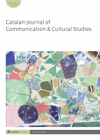
Full text loading...
 , Miguel Ibáñez-Cuquerella1
, Miguel Ibáñez-Cuquerella1
The New Right has generated alternative communities on YouTube in which it wages its cultural battle without journalistic intermediation. Recent research has detected the existence of a popular Alternative Influence Network in the United States formed by creators who use the techniques of digital influencers to spread their radical messages. This article studies this in the Spanish reality with the aim of analysing the agenda and framing of the contents disseminated by its right-wing micro-celebrities. To do so, it applies a content and discourse analysis to 406 videos of five prominent YouTubers. The results show the thematic predominance of feminism, racial diversity, welfare state economics and public freedoms. The general framing is one of opposition to progressive policies and the culture of political correctness. The lack of explicit supremacism, the use of cultural rather than racial arguments, the recourse to offensive humour and the absence of a propositional dimension bring them closer to the discursive strategies of the American Alt-lite.

Article metrics loading...

Full text loading...
References


Data & Media loading...

Publication Date:
https://doi.org/10.1386/cjcs_00068_1 Published content will be available immediately after check-out or when it is released in case of a pre-order. Please make sure to be logged in to see all available purchase options.